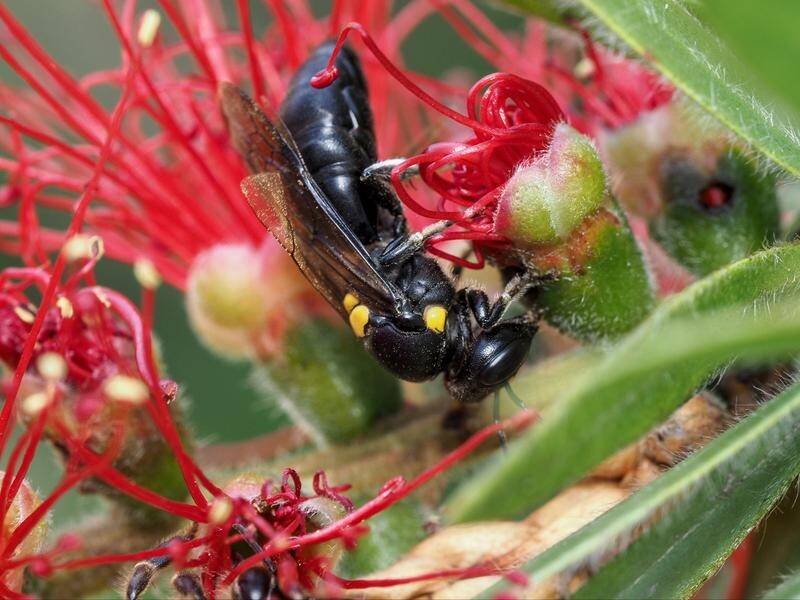
When a patch of thriving Queensland bushland was cleared for housing, the songbirds fell silent and the koalas disappeared.
“It was paradise coming home to all sorts of birds and seeing it destroyed was heartbreaking,” nature photographer Erica Siegel told AAP.
But an eco-system of barely visible creatures remained hard at work after the trees were felled near her home in Redlands, southern Brisbane, two decades ago.
One evening Ms Siegel was in her garden when she heard buzzing coming from a native shrub.
“They were blue-banded bees coming into nest under the grevillea, I had never seen them before but it fascinated me and became an absolute passion,” she said.
Since that moment in February 2009, Ms Siegel has been photographing the delicate dance of bees as they move from flower to flower in her garden.
She hopes her images remind people of the critical role bees play in our existence.
“They’re part of the web of life, insects hold it all together.”
To recognise just that, the United Nations declared May 20 World Bee Day in 2017.
It aims to raise awareness of the human threat to populations of bees and other pollinators like butterflies, bats and hummingbirds.
Honey bees pollinate about one-third of Australia’s food crops, while the vast majority of flowering plants rely on bees for reproduction and survival.
Alan Dorin from Melbourne’s Monash University is leading a team of researchers using AI to track and identify insects for better management of biodiversity and pollination.
He said there were more than 2000 species of native bees in Australia, but roughly 400 remained unnamed and little was known about which plants they pollinate.
“We’ve got so many amazing insect pollinators out there that we just know nothing about, so technology is helping us to learn about them,” Associate Professor Dorin said.
But ultimately, it’s human actions that can save or destroy them.
“Ways to improve insect populations are pretty obvious, but we just don’t do them,” Associate Professor Dorin said.
“It’s planting wildflowers, not destroying their native habitat, not damaging the climate and making it too hot or too wet for the bees to flourish.
“All the things we’re doing to destroy the planet is destroying the bees.”
The deadly varroa mite is another major threat to the global honey bee population and was discovered in NSW last year.
CSIRO senior researcher John Roberts is among Australian scientists using DNA testing to develop early warning systems for the mite.
“We’re generally doing a really good job of containment in Australia and the plan for eradication is very firm, but it’s got its challenges,” Dr Roberts said.
“Better surveillance tools will help us understand whether we’ve been successful in eradication and whether we can have confidence in zones we think are varroa-free.”
Back in Queensland, Ms Siegel hopes Australians will feel as strongly about bees as they do koalas.
“I love the creatures people don’t see, we need to take more notice.”
Australian Associated Press
